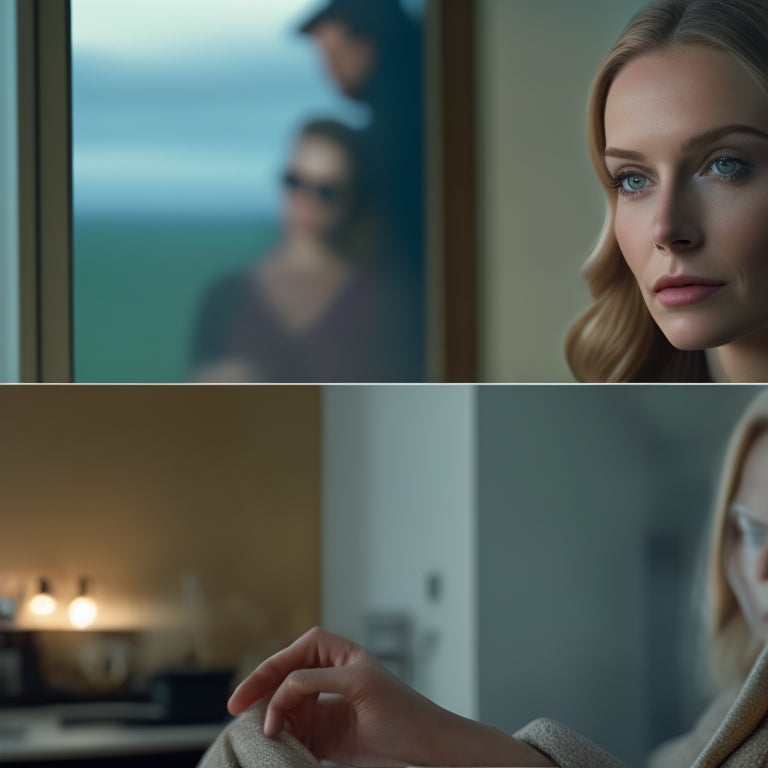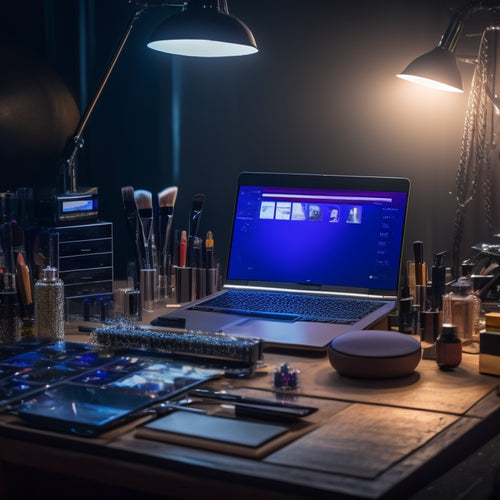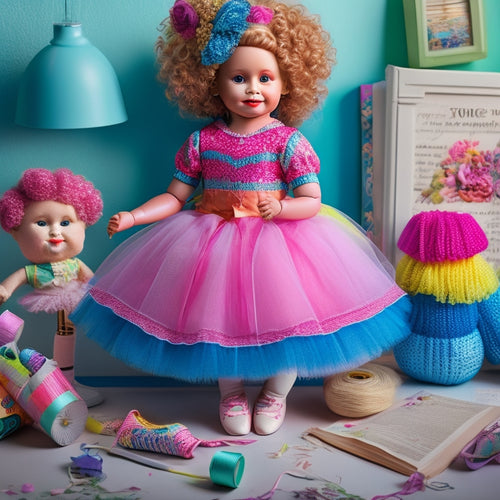
Why Editing Matters: Essential Photography Tutorials
Share
You've likely taken thousands of photos, but it's the editing process that transforms a good image into a stunning one. To elevate your photography skills, master belly dance photography basics, learn essential editing tools, and retouch skin tones and textures. Enhance dance movement and flow, work with color and contrast, and create dramatic black and white images. Balance light and shadow, and learn advanced editing techniques and tricks to take your photos to the next level. As you explore the world of editing, you'll discover the secrets to revealing the full potential of your photos and turning them into breathtaking masterpieces.
Key Takeaways
• Editing enhances the emotional impact of an image by mastering color grading and contrast techniques.
• Local and global adjustments refine the image, creating depth, dimension, and a cohesive look.
• Removing distractions and noise reduction techniques ensure a clean, polished image that focuses the viewer's attention.
• Editing allows for creative experimentation with layer blending modes, adjustment layers, and opacity levels.
• Proper editing elevates the overall quality of the image, making it more engaging and effective in conveying the intended message.
Mastering Belly Dance Photography Basics
Get ready to shimmy into the world of belly dance photography by grasping the fundamental principles that will make your shots sizzle with energy and sensuality.
As you snap away, remember that costume considerations are key - those flowing fabrics and sparkling accessories can make or break your shot.
But before you start clicking, observe dance floor etiquette: respect the dancer's personal space and avoid distracting them during performances.
You'll also want to be mindful of performance anxiety - a relaxed dancer is a happy dancer, and it shows in the photos!
Capture the musicality expression by focusing on the dancer's movements and body isolations - it's all about the hips, baby!
Don't forget to integrate props wisely, and highlight those fancy footwork skills.
To conclude, be culturally sensitive and aware of the rich heritage behind belly dance. By mastering these basics, you'll be well on your way to creating stunning, spellbinding photographs that showcase the beauty and elegance of belly dance.
Essential Editing Tools for Beginners
As a beginner, you're about to discover the secrets of photo editing.
You'll start by selecting the right software for your needs, then learn how to work with adjustment layers to make precise edits.
Selecting the Right Software
When you're just starting out with photo editing, choosing the right software can be an overwhelming task, especially with so many options available. But fret not, we're here to guide you!
The first step is to take into account your software preferences. Are you a Mac or PC user? Do you prefer a user-friendly interface or are you comfortable with a steeper learning curve? Knowing your preferences will help you narrow down your options.
Next, think about your budget considerations. Do you want to invest in a paid software or are you looking for free alternatives? Adobe Photoshop and Lightroom are popular choices among professionals, but they come with a hefty price tag. On the other hand, free software like GIMP and Canva offer similar features at no cost.
If you're just starting out, you might want to consider a free trial or a more affordable option like Skylum Luminar. Ultimately, the right software for you'll depend on your specific needs and goals.
Understanding Adjustment Layers
You'll find adjustment layers to be a game-changer in your editing workflow, allowing you to make non-destructive edits and tweaks to your images with ease. Think of them as a safety net, letting you experiment with different looks and styles without permanently altering your original image.
With adjustment layers, you can try out new ideas, correct mistakes, and even revert back to previous versions if needed.
When working with adjustment layers, you'll often find yourself using Layer Blending modes to combine multiple layers and achieve unique effects. By experimenting with different blending modes, you can create stunning, high-contrast images that grab attention.
Plus, with adjustment layers, you can fine-tune your color palette to achieve perfect Color Harmony. This means your images will look more cohesive, visually appealing, and – dare we say it – Instagram-worthy!
Mastering Color Grading
Now that you've harnessed the power of adjustment layers, it's time to take your images to the next level by mastering color grading, a technique that can evoke emotions, convey moods, and create a visual identity for your brand.
Think of color grading as the secret sauce that sets your photos apart from the rest. It's all about creating a consistent look and feel that screams 'this is me!' – or rather, 'this is my brand!'
To achieve this, you'll want to focus on color harmony. This isn't about creating a rainbow-colored mess; it's about selecting a palette that resonates with your brand aesthetic. Are you all about bold and bright, or soft and pastel?
Whatever your style, mastering color grading will help you establish a recognizable visual identity that makes your audience go, 'Ah, yeah, that's so [Your Name]!'
Retouching Skin Tones and Textures
By subtly refining skin tones and textures, you can dramatically enhance the overall realism and emotional impact of your portraits, drawing viewers in and refusing to let them look away. It's like giving your subject a digital facelift - minus the awkward conversations with a plastic surgeon!
When it comes to retouching skin tones, think Skin Radiance. You want to aim for a natural glow that doesn't look like your subject just got a spray tan. Use the 'soft brush' tool to gently even out skin tones, and don't be afraid to experiment with different opacity levels.
Now, about those textures - it's all about Texture Harmony. You want to create a sense of depth and dimension, not a flat, plastic-like finish. Use the 'healing brush' to subtly smooth out blemishes and imperfections, and remember, less is often more.
With a little practice, you'll be a retouching pro in no time, and your portraits will be simply radiant!
Enhancing Dance Movement and Flow
When photographing dancers, you'll want to capture their dynamic poses and freeze movement moments that convey energy and emotion.
To do this, you'll need to anticipate and react quickly to the dancer's movements, using a fast shutter speed to freeze the action.
Capturing Dynamic Poses
To freeze the beauty of dance in a single frame, you need to anticipate and capture the peak of movement, where the dancer's body is stretched to its limits, conveying energy, power, and grace. As a photographer, it's your job to direct your model to achieve these dynamic poses.
Here are some tips to get you started:
-
Direction is key: Give your model direction on the type of pose you're looking for. Are you going for elegance, power, or fluidity? Make sure they understand the mood you're trying to capture.
-
Inspiration is everywhere: Draw inspiration from dance performances, music videos, or even fashion photography. Study the poses, lighting, and composition to get an idea of what works.
-
Encourage experimentation: Allow your model to try out different poses and movements. This will help you capture a natural, effortless look that showcases their personality.
- Pay attention to details: Pay attention to the subtleties of your model's body language, from the tilt of their head to the curve of their spine. These small details can make or break the shot.
Freezing Movement Moments
As you aim to freeze movement moments, your camera becomes an instrument to orchestrate the dance, capturing the fluidity and dynamism of the dancer's motion. You're not just taking pictures, you're conducting a visual symphony! To master this, you need to understand how to tame motion blur and harness the power of camera settings.
| Technique | Tips |
|---|---|
| Fast Shutter Speed | Freeze motion with 1/1000th of a second or faster |
| Panning | Follow the dancer's movement with your camera for a sense of motion |
| Continuous Autofocus | Track the dancer's movement with AI-powered focus |
| Burst Mode | Capture multiple frames per second for the perfect shot |
Working With Color and Contrast
You'll often find that adjusting color and contrast is crucial in transforming an ordinary image into an extraordinary one. It's like adding a dash of magic to your photo! When done correctly, it can elevate the mood, create depth, and draw attention to your subject.
Here are some key takeaways to keep in mind when working with color and contrast:
-
Color Harmony: Guarantee your colors work together in harmony. Analogous colors (next to each other on the color wheel) create a smooth, cohesive look, while complementary colors (opposite each other) add contrast and pop.
-
Contrast Psychology: Balance contrast to guide the viewer's attention. High contrast draws attention, while low contrast creates a sense of calm.
-
Local Adjustments: Make selective adjustments to specific areas of your image to create depth and dimension.
- Global Adjustments: Apply overall adjustments to set the tone and mood of your image.
Removing Distractions and Noise
Now that you've mastered the art of enhancing your image with color and contrast, it's time to tackle the unwanted elements that can detract from your subject's impact, namely distractions and noise. These pesky elements can make your image look cluttered and take attention away from the star of the show – your subject.
To refine your image, you'll want to eliminate distractions and reduce noise. Here's a quick rundown of how to do just that:
| Technique | Purpose | Result |
|---|---|---|
| Spot Healing Brush | Remove blemishes and small distractions | Smooth, flawless skin |
| Clone Stamp Tool | Eliminate larger distractions | Seamless removal of unwanted objects |
| Noise Reduction Filter | Reduce grain and digital noise | Clean, crisp image |
| Content-Aware Fill | Remove complex distractions | Realistic, distraction-free image |
Creating Dramatic Black and White
When you're creating dramatic black and white photos, you'll want to start by converting your image to monochrome. This will allow you to focus on the tones and textures of your subject.
Next, you'll need to enhance the contrast range to add depth and dimension to your image. By mastering these two key steps, you'll be well on your way to capturing stunning black and white photos that truly pop.
Converting to Monochrome
By converting your images to monochrome, you can strip away the distractions of color and focus attention on the essence of your composition.
But, be warned, going monochrome can also amplify mistakes, making them more noticeable. To avoid common monochrome mistakes, follow these tips:
-
Don't overdo it: Avoid over-converting, which can result in an image that looks unnatural and lacks depth.
-
Pay attention to black nuances: Black isn't just black; it has nuances that can make or break your image. Experiment with different shades to find the perfect tone.
-
Balance contrast: A good monochrome image relies on balanced contrast. Be mindful of the difference between light and dark areas to create visual interest.
- Add texture: Monochrome images can sometimes look flat. Add texture to give your image depth and visual appeal.
Enhancing Contrast Range
You can create a striking black and white image by manipulating the contrast range, which allows you to accentuate the darkest shadows and brightest highlights in your scene. This is where the magic happens, folks! By tweaking the contrast, you can add depth, drama, and emotion to your image. Think of it as a spotlight shining on your subject, making it pop against a rich, inky background.
To achieve this, you'll want to make local adjustments to specific areas of your image. This could mean darkening the shadows to create mystery or brightening the highlights to add a touch of glow. The key is to find the right balance between light and dark, creating a sense of harmony and visual flow.
Experiment with tonal variations to find the perfect contrast ratio for your image. Remember, it's all about creating a mood and atmosphere that draws the viewer in. So, don't be afraid to get creative and push those contrast boundaries – your image will thank you!
Adding Atmosphere and Mood
Capturing the essence of a scene, you can evoke a specific atmosphere and mood in your photographs by carefully considering the interplay of light, color, and composition. Think of it as setting the tone for your visual narrative. Moody landscapes, for instance, can benefit from a more muted color palette and dramatic lighting to create an ethereal quality.
Here are some tips to help you create the desired atmosphere:
-
Play with color grading: Cool tones can evoke a sense of melancholy, while warm tones can create a cozy atmosphere.
-
Experiment with contrast: High contrast can create a dramatic mood, while low contrast can produce a soft, ethereal quality.
-
Pay attention to lighting: Soft, diffused light can create a dreamy atmosphere, while harsh shadows can add drama.
- Consider the power of negative space: Leaving some elements out of focus or using empty space can create a sense of simplicity and calm.
Balancing Light and Shadow
Mastering the balance between light and shadow is key to adding depth and dimension to your photographs. When you learn to harness the power of light and shadow, you'll be amazed at how it can elevate your photography game. It's like adding a secret ingredient to your recipe – it takes your images from meh to mesmerizing!
| Lighting Technique | Effect on Image |
|---|---|
| High-Key Lighting | Soft, flat light; minimizes shadows |
| Low-Key Lighting | Dramatic, moody shadows; emphasizes texture |
| Sidelighting | Accentuates texture, adds depth |
| Backlighting | Creates a sense of volume, separates subject from background |
| Shadow Mapping | Reveals details in shadows, adds mystery |
Now, let's talk about Light Sculpture – the art of controlling light to create a sense of volume and dimension. By manipulating light and shadow, you can create a sense of drama, mood, and atmosphere in your images. Think of it as painting with light – you're the master artist, and your camera is the brush!
Advanced Editing Techniques and Tricks
Post-processing is where the magic happens, and advanced editing techniques and tricks can transform your good photos into stunning works of art. You're no longer constrained by the camera's capabilities, and it's time to unlock your creativity. With advanced editing techniques, you can take your photography to the next level.
Here are some advanced editing techniques to master:
-
Creative Compositing: Combine multiple images into one, creating surreal and eye-catching results. Learn to seamlessly blend images, playing with scale, texture, and color.
-
Nighttime Retouching: Tame the noise and grain that come with low-light shooting. Learn to reduce noise, enhance details, and create stunning nighttime scenes.
-
Selective Color Grading: Isolate specific colors and adjust their hue, saturation, and brightness to create a cohesive look. This technique adds depth and emotion to your images.
- Orton Effect: Blur and sharpen selective areas to create a dreamy, ethereal atmosphere. This technique adds a touch of magic to your portraits and landscapes.
Frequently Asked Questions
Can I Edit Photos on a Smartphone or Tablet?
"Are you stuck in a darkroom of doubt? Fear not! You can edit photos on a smartphone or tablet, but be aware of mobile limitations. A portable workflow is possible, and we'll show you how to make it work!"
Do I Need to Be a Skilled Photographer to Edit Well?
You don't need to be a skilled photographer to edit well; with practice, you'll develop your own creative freedom, artistic vision, and personal style, making your edits truly unique and reflective of you!
How Long Does It Take to Become Proficient in Editing?
You'll be thrilled to know that becoming proficient in editing takes time, effort, and practice patience! It's a skill development marathon, not a sprint, so buckle up and commit to regular editing sessions – you'll be a pro in no time!
Are Free Editing Software and Apps Good Enough?
You're wondering if free editing software and apps are good enough? Think of it like a free appetizer - it's a teaser, but not the full meal. You'll face software limitations, and your user expectations might not be met, forcing editing trade-offs.
Can I Edit Photos in Batches or Individually Only?
"You're wondering if you're stuck editing photos one by one, but fear not! You can batch process them, ensuring edit consistency across the board, and saving you tons of time - yes, it's a game-changer!"
Related Posts
-

3 Essential Tools for Dance Makeup Artists Online
As a dance makeup artist, you already possess the skills to create stunning looks, and with the right digital tools, ...
-

Exciting 'Dancer Doll' Sewing Pattern Released
The Dancer Doll sewing pattern is now available, offering a detailed guide to crafting a beautifully detailed doll. T...

